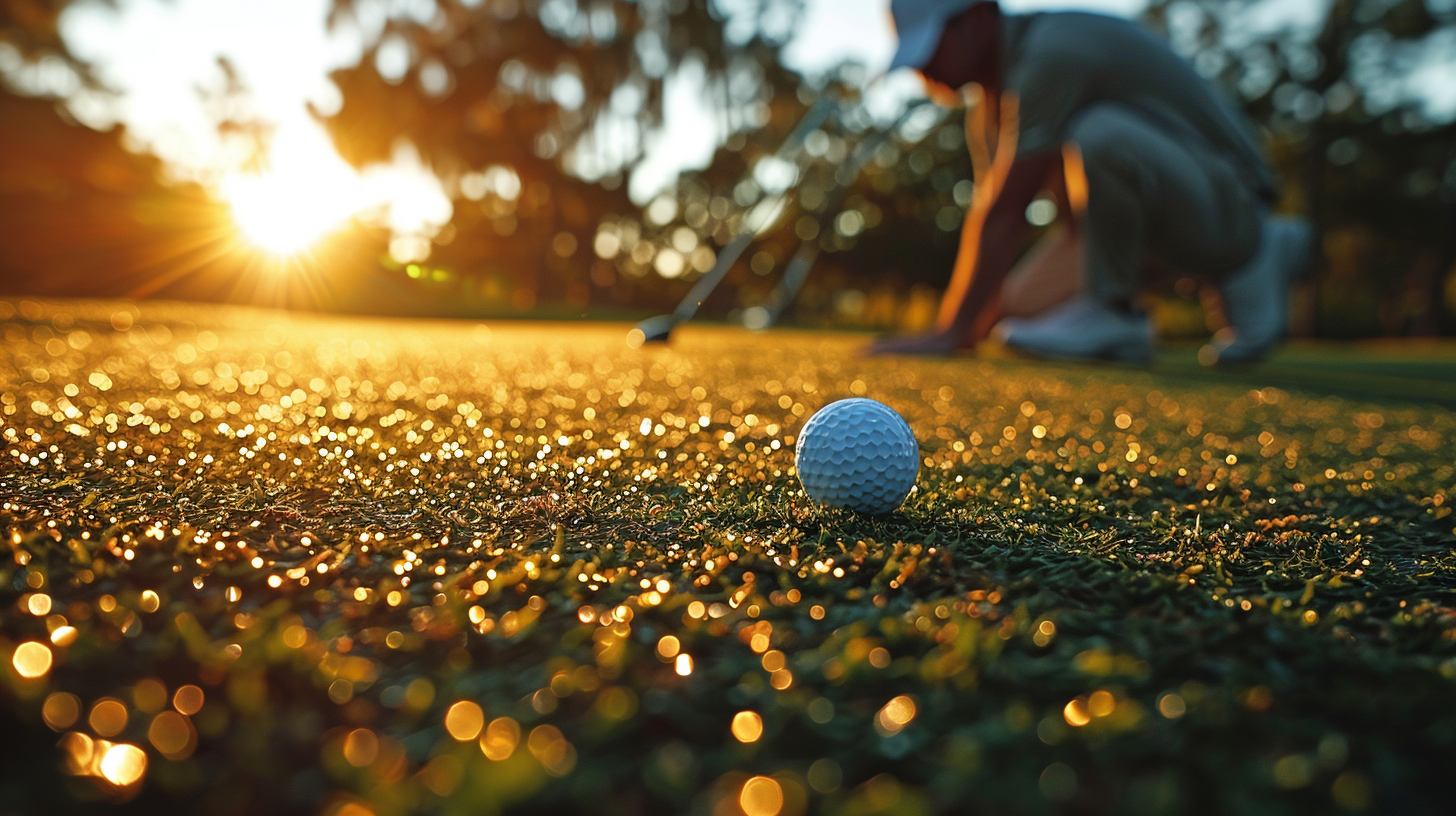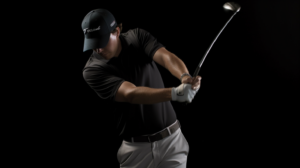Watching a golf ball back up on the green as if it hit an invisible wall can be mesmerizing.
Putting backspin on golf shots requires coordinated technique, optimized Proper Set Up and Grip Lead to Backspin equipment, and practice to repetitive precision.
Let’s dive into the keys for learning how to put backspin on a golf ball…
Proper Set Up and Grip Lead to Backspin
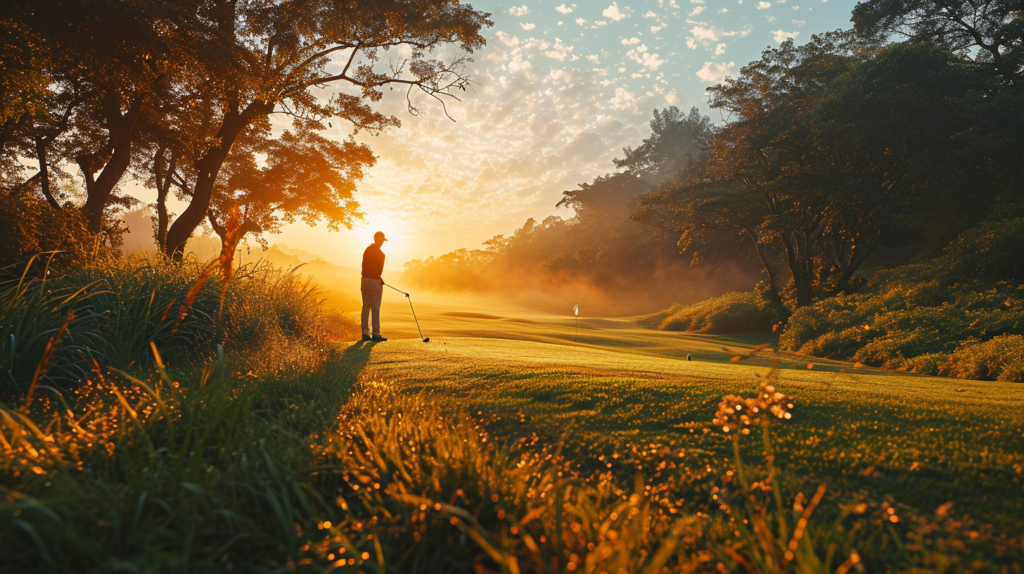
Having the proper set up and grip is vital for being able to put backspin on your golf shots. By gripping down slightly on the club, you promote a descending blow that imparts spin. Your grip pressure should not be too tight, but allow your wrists to hinge and release through the ball.
The ball position should be played forward in your stance to encourage striking the ball first before contacting the turf. This ensures you are making downward contact that squeezes spin onto the ball at impact.
Widen your stance for stability, while still keeping athletic flex in your knees. This athletic position allows you to make an aggressive release through the ball.
Set up to the ball with your feet slightly wider than shoulder width apart. The exact width depends on the club you are hitting and conditions, but generally your rear foot should pull back to match the width of your stance.
Distribute your weight evenly to the balls of your feet. The wider base gives you lateral stability, while weight on your toes keeps you on your front side.
Softly flex your knees over your shoelaces, coiling down with athleticism to make a powerful move into the back of the ball.
Grip down on the club about an inch from your usual position. Gripping down gets your hands ahead of the ball at address, while lowering your hands at impact.
With gripping down, be careful not to overtighten your left hand. You still want the club to be able to release out in front of you.
Light pressure in the last three fingers of the left hand accentuates hinge and lag going into impact. The combination of forward hands and downward blow compresses the back of the ball aggressively to impart spin.
Clubface Angle and Attack Angle Create Spin
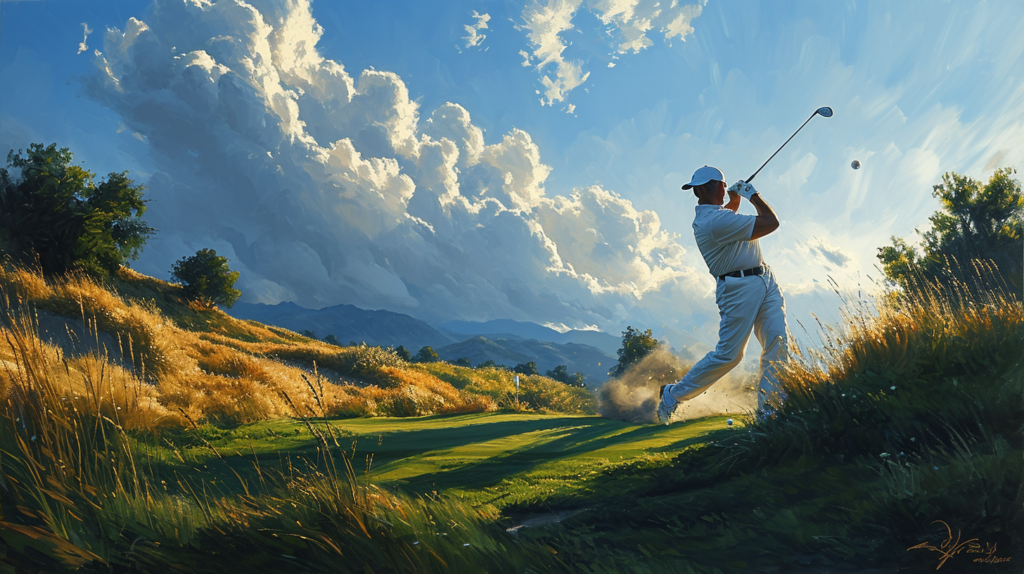
Two key components to creating backspin are having the proper clubface angle and attack angle. At address, keep the clubface sightly open relative to your swing path.
As you swing down and through the ball, your clubhead should be moving out-to-in across the target line. Matching an open clubface with an out-to-in swing path imparts tremendous sidespin on the ball, resulting in backspin.
Use alignment sticks or two clubs on the ground to shape an appropriate out-to-in path. Place an alignment stick outside the ball, angled out-to-in across the target line.
Then address the ball so your clubface aligns parallel left of that stick. This sets up the relationship between swing path and face angle that adds sidespin.
Now make practice swings keeping your clubface tracking outside the stick as you swing down and through. Rehearse that out-to-in arc with an open face to dial in the contact that boosts spin.
In addition to the clubface angle, you need a downward or negative attack angle. A descending blow strikes the ball first and then takes a divot after contact.
The combination of a downward strike and an open clubface produces maximum backspin. Use an impact bag to practice driving your hands down through impact.
Angle the bag to promote a strike that takes a divot. Check ball position so you make contact on the downslope and brush the grass immediately after.
Time a descending strike that compresses against the turf.
Strike the Ball First, Then the Turf
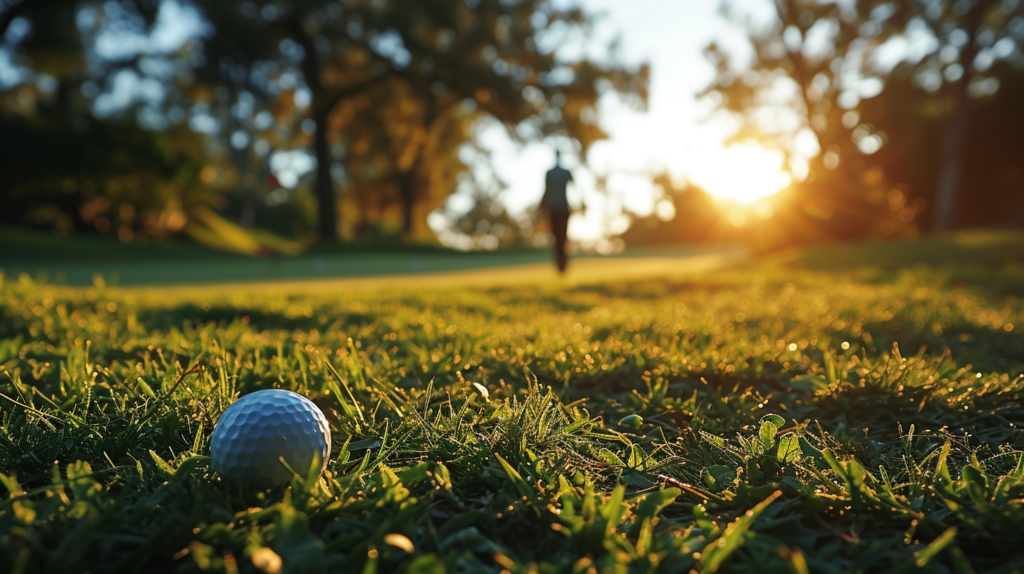
To generate backspin from a wedge or short iron, it is vital to make contact with the ball just prior to taking a divot. You want to brush the grass firmly right after striking the ball to create friction.
Hitting too much turf before making contact with the ball reduces spin. The sequence of compressing the ball into the turf is what squeezes extra backspin onto shots.
Time it so that you strike the equator of the ball and then the leading edge bruises the grass immediately after.
To properly sequence your strike, use foot spray to check your divots. Spray the grass where you want to make contact, then hit shots checking divot patterns.
Work from mid-irons through wedges noticing how the divot moves forward the higher the loft. Your divot pattern should start in front of the original ball position, then continue out in front of that.
This shows you are making contact on the way down before the low point of your arc. Adjust ball position and lean shaft at address so you brush the grass immediately following the initial strike.
You can also place balls on tees halfway buried to learn this strike. Hit shots with the ball above the grass, making contact before you hit the tee.
Pay attention to crispness of strike and the tightness of divots beyond. Consistent shots first catching ball before digging into the ground builds skills to maximize backspin.
Monitor clubface and path control as you sweep down without scooping leading up to impact.
Accelerate Through Impact for Extra Spin
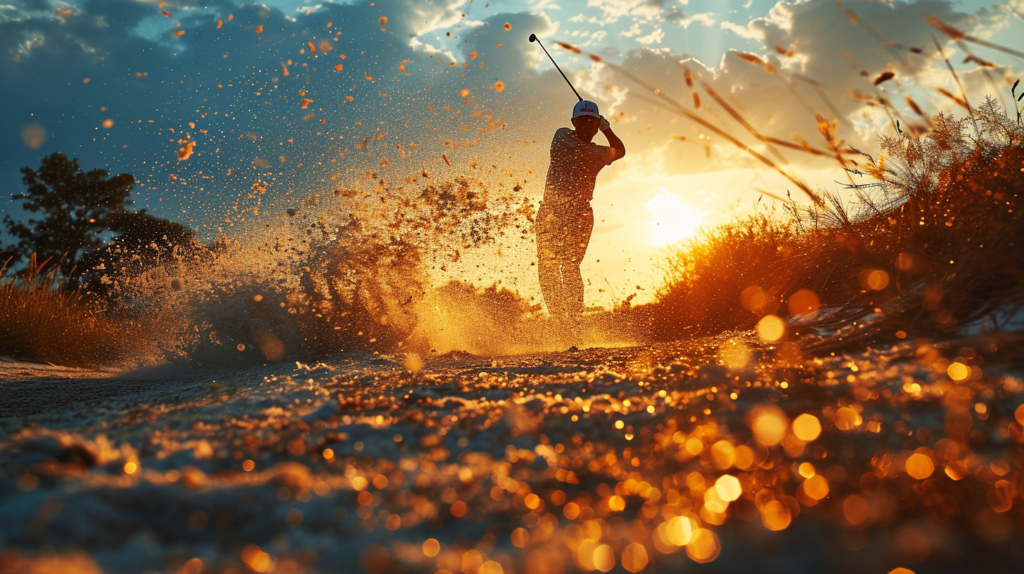
Your clubhead speed has a direct impact on the amount of backspin you can produce. The faster the clubhead is traveling at the moment of impact, the more backspin that will be created.
Make sure you accelerate the club through the hitting zone. Lag putting is a great drill to perform to enhance your acceleration just as you strike the ball.
Building speed right into impact maximizes compression for a few hundred extra RPMs of spin.
The downswing starts from the ground up, sequencing into the lead leg straightening then the trail side pushing and clearing. Avoid early upper body movement before you ground force, as this often leads to casting and flipping at impact.
Maintain spine angle and lag pressure into the lead leg posting up out of your coiled athletic set up. This posts your body mass up against centered leveraged arms, saving angular velocity for when it matters most.
Hit shots and monitor clubhead speed. First swing normally, then intentionally focus on accelerating just prior to impact.
Use a speed radar or check ball flight indicators of extra energy to confirm effectiveness. You want to feel the club jump or release right into the back of the ball, springing off like cracking a whip.
Contrast lack of acceleration by guiding and slowing the handle, paying attention to how both clubhead speed and backspin decrease.
Lag putting trains the proper sequence to build speed into impact. Set up to lag putts using your full swing grip and posture.
Roll the ball as you normally would stroke a flat putt. Then hit the identical putt immediately after, except this time accelerate harder through impact.
Listen and feel how the crisper strike jumps off the face when you fire the hands aggressively forward. Lag putting engrains this speed release move you also want in full shots for enhanced spin.
Use Your Wrists to Finesse Spin
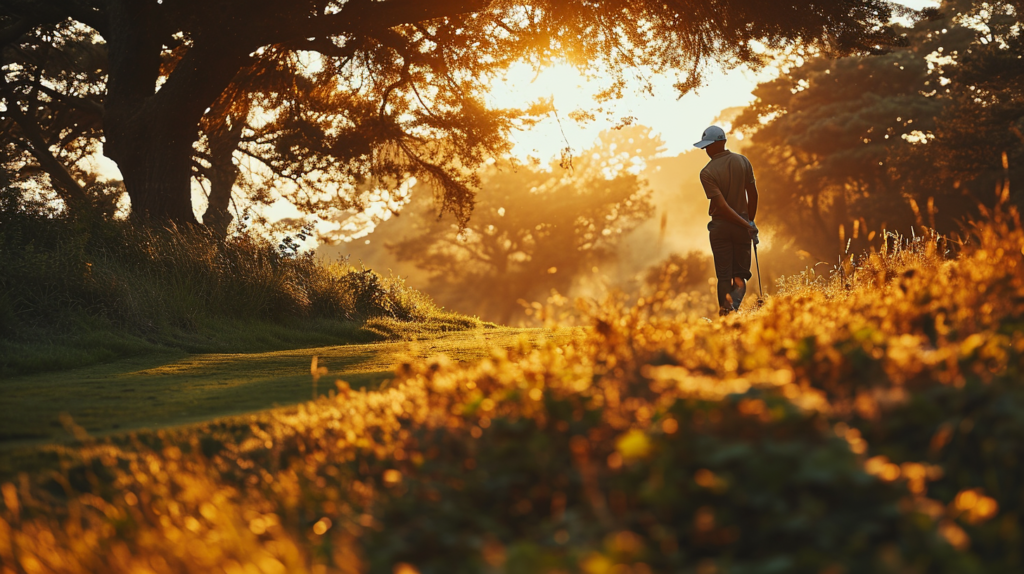
Properly using your wrists is one of the finesse factors that can influence backspin. On the backswing, hinge your wrists early.
At the start of the downswing going into impact, re-hinge your wrists a second time to control the face angle.
Time it so that your wrists snap through impact to square the face up as you compress the ball. Allow your wrists to release fully to brush the grass aggressively through the ball. Using your wrists to square and release adds spin-inducing sidespin.
The first wrist hinge gears up early on the backswing for width and leverage. By setting your wrists immediately on takeaway, you store power like a stretched rubber band about to snap back inward.
Avoid over-hinging past parallel as too much wrist bend makes it hard to reconnect properly approaching impact. The optimal wrist hinge Latitude leaves the clubface square on plane as the backswing finishes.
Going into downswing, feel your hands moving first together and down. Pressure builds as the butt end points toward the ball re-hinging the wrists.
The clubface closes entering the hitting zone, poised to snap back open. Unhinge your wrists assertively to square the face, making contact as the sharp edge of your lead wrist rotates back upward.
Fully release the head through and beyond towards your target. Wrist action finesse at impact ensures optimal spin from face angle delivery.
Choose Spin-Friendly Equipment
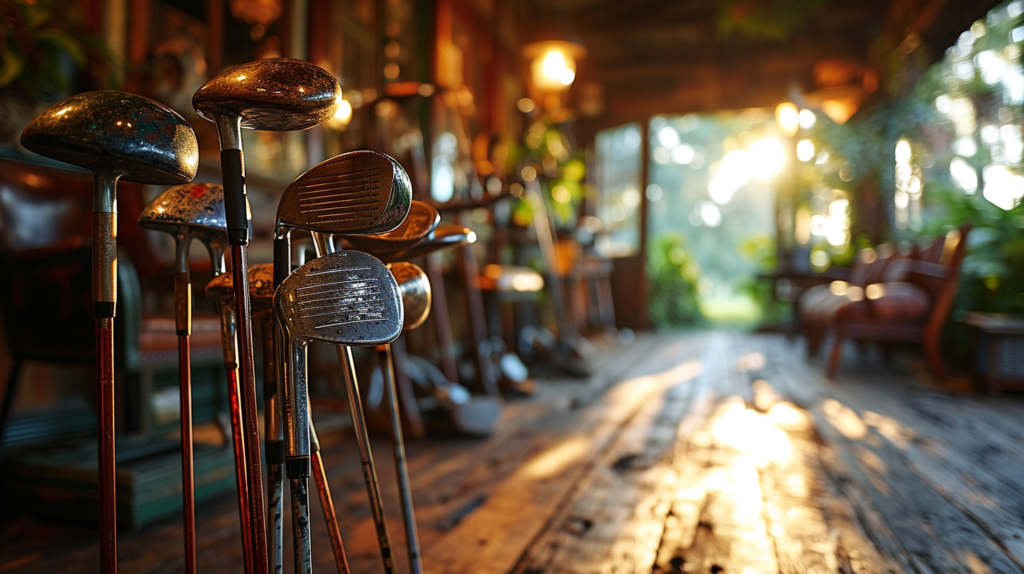
Selecting the proper wedge design and golf ball construction are additional variables that affect spin. Clubs with higher lofts naturally impart more spin than their lower loft counterparts.
This is because the clubface angle matches more squarely with an upward attack at impact. Aggressive grooves that are sharply cut also channel away grass and moisture for added friction between the face and ball.
Some balls are engineered to increase spin on full shots, while others promote spin on shorter pitches and chips. A urethane cover grabs the grooves better.
You also want to match a softer compression ball on full shots versus a firmer one for tighter lies. Dial in your wedge gap distances starting with lower lofted clubs that spin less.
Club selection directly correlates to spin rates. As loft increases, shots launch higher with a steeper angle of descent.
When the clubface matches up closer to perpendicular with angle of attack, this adds extra backspin. Carefully testing wedge loft gapping helps optimize yardages and spins for various distances.
Start by identifying reliable shorter swing stock shots with lower lofted wedges producing moderate spin rates. As you progress further out in distance, increase lofts to promote additional spin and elevation.
Fine tune full, three quarter and half shots to fill precise yardages.
Sharp aggressive grooves also boost spin performance. Clubface texture is important because it channels debris away allowing cleaner contact.
New wedges start out ultra sharp, but rounding begins after extensive play. Keeping grooves crisp and groove edges pronounced maintains friction that catapults backspin.
Consider replacing well-worn wedges showing excessive face wear even if loft/lie angles remain unchanged. Maximizing performance from new groove roughness best utilizes the enhanced spin characteristics from your scoring instruments.
Softer higher spinning tour balls react differently than harder surlyn covered rocks. Firmer two-piece distance balls limit wedge spins for beginners reducing exaggerated curvature.
Experienced players prefer softer covers grabbing aggressive grooves, compressing more against the face to produce accelerating launch angles. Matching player type to appropriate spin-maximizing construction optimizes ability to shape shots.
Urethane balls also perform best flighting fuller shots into greens, whereas firmer balls roll out more predictably on tighter lies requiring greater precision. Dialing in proper ball selection enhances wedge play finesse.
Conclusion
Mastering the ability to put backspin on golf shots opens up shot-shaping creativity around the green. By implementing proper setup, equipment selection, swing path techniques, and wrist action, you can add hundreds of revolutions of backspin.
Compress the ball against the firm turf to maximize spin and learn to finesse trajectory and precision.
